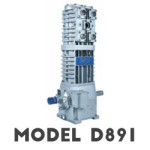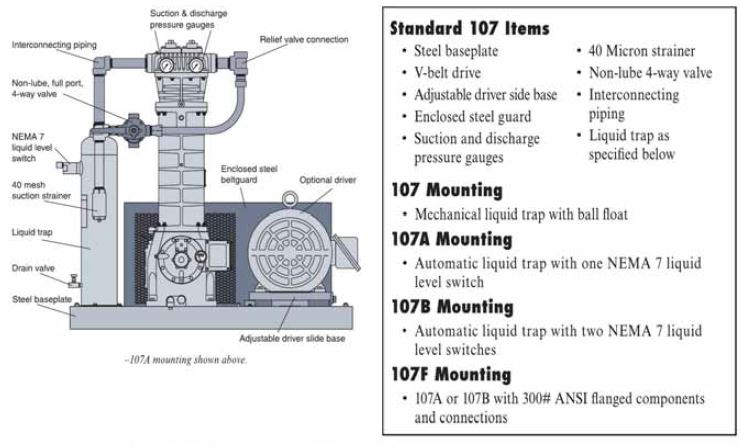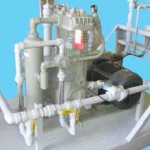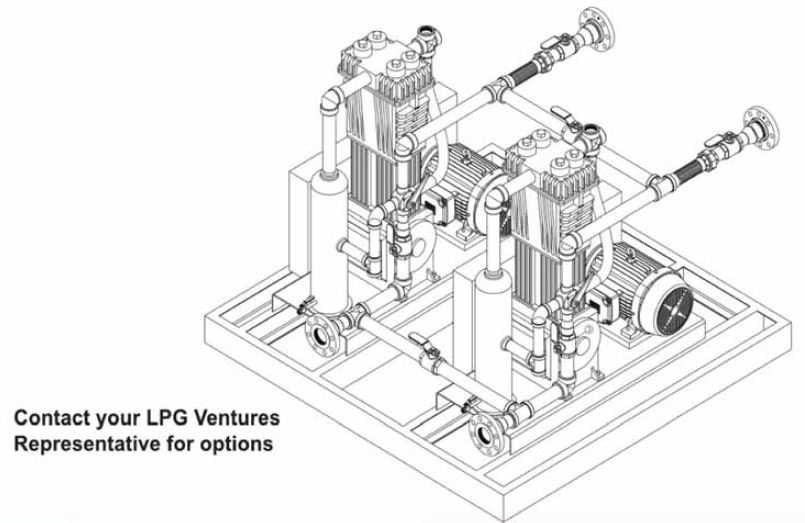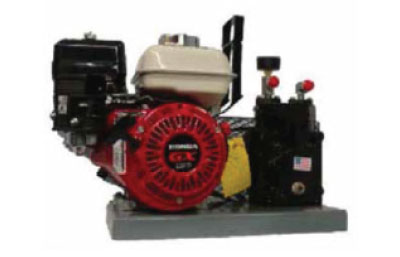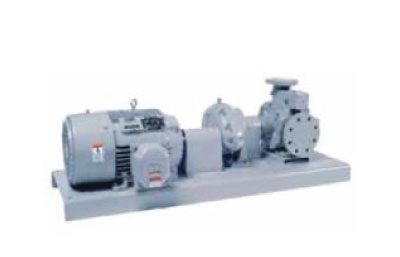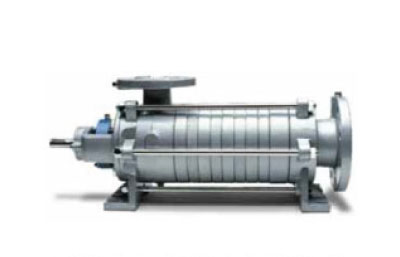Features and Benefits
- Why select a Compressor to Transfer LPG and NH3?
- Compressors Offer Maximum Versatility
- Several Models to Match your Needs
- Piston Rod Packing Design
- Signle-Stage Vertical Compressors
- Single-Acting Designs with a Wide Range of Capacities
- Double-Acting Design for Even Greater Capacity
- Maintenance Made Simple
- Designed for a Variety of Applications
- Custom Engineered compressor Packages Available

Why select a Compressor to Transfer LPG and NH3?
Many LPG piping systems do not provide ideal NPSH conditions for liquid pumps. As a result, the poor NPSH conditions lead to excessive pump maintenance. Since compressors are only exposed to vapors, they are not affected by poor NPSH conditions. Many LPG pressurized tanks such as railcars and buried tanks have top unloading connections. A compressor is the perfect solution for transferring liquids to and from these types of tanks.
Compressors Offer Maximum Versatility
Corken Compressors are designed for maximum versatility. A compressor can be piped for multiple plant applications. For example, a rail car unloading compressor can also be utilized to load and unload trucks.
Compressors serve many other types of applications as well. They can be used to transfer liquids between tanks, off-load/ load-out liquids, recover residual vapor, and evacuate tanks for maintenance purposes.
Several Models to Match your Needs
Corken offers five sizes of vertical, single-stage compressors (Models 91, 291, 491, 691 & 891) for LPG/NH3 applications. The compressors are available with threaded or ANSI flanged connections and cover a full range of capacities ranging from 4.1 to 117 cfm (7.0 to 198.8 m3/hr) of liquid transfer. ANSI is a raised faced flange that dramatically improves leakage containment and structural integrity.
Piston Rod Packing Design
Corken’s standard LPG vertical compressors are a plain style design that uses one set of V-ring packing or a combination of V-ring and segmented packing. Most of Corken’s LPG vertical compressors use a single set of V-ring packing (plain-style). The only exception is the model D891 which uses a combination of V-ring packing and segmented packing. Even thought the D891 is a D-style compressor, it is the only D-style compressor that is not oil free. All other D-style compressors are oil free.
V-ring packing consists of several V-rings, male and female packing rings, washers and a spring while segmented packing consists of packing cups, spacers, O-rings, segmented packing, backup rings and a spring. Neither of these plain style packing arrangements are oil-free designs. if oil-free gas compression is required, Corken’s D- or T-style compressors are recommended.
Single-Stage Vertical Compressors
Corken’s single-stage compressors are typically used in applications where the gas compression ratio is less than 5:1. Generally, applications with relatively low differential pressures are well suited for a single-stage compressor. Transport, rail car and marine unloading by vapor differential are examples of this type of applications.
Single-Acting Designs with a Wide Range of Capacities
Single vertical compressors only have on compression stroke per revolution so the compression takes place on one side (top) of the piston. The single-acting compressors come in a variety of models. Cylinder sizes range from 3.0″ to 4.5″ (76.2 to 114.3 mm) while piston displacement ranges from 4.1 to 60.8 cfm (7.0-103.3 m3/hr).
Double-Acting Design for Even Greater Capacity
double-acting compressors have two compression strokes per revolution so the compression takes place on both sides of the piston. As a result, double-acting compressors offer greater capacities. Corken’s model 891 is a double-acting single-stage gas compressor that is capable of supplying between 56.7 and 117.0 cfm (96.3 and 198.8 m3/hr). the model D891 is offered in either lubricated or non-lubricated versions and is not an oil free design; however, the T891 (T-Style) compressor does offer oil-free gas compression.
Maintenance Made Simple
Corken compressors are designed to simplify routine maintenance procedures. Maintenance operations such as valve replacement may be accomplished without disturbing the piping, while ring replacement may be accomplished simply by removing the head.
Designed for a Variety of Applications
Corken gas compressors are designed for use in liquid transfer, vapor recovery, scavenger and portable applications. Whether it is gas recover from cylinders or barge unloading, Corken has a compressor for your application.
Custom Engineered compressor Packages Available
Corken offers standard mountings designed specifically for liquefied gas transfer, vapor recovery and gas booster application. If the standard mountings and compressor packages do not meet your application requirements, Corken can supply a custom engineered package that meets the most demanding customer specifications. Skid mounted units can be supplied with control panels, safety controls, pulsation dampeners, receiver tanks, valves and other special accessories as required. For more details, see the standard mounting and compressor packages and custom engineered packages at the back of this sales brochure.

